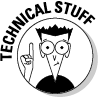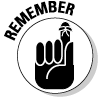Introduction
Lean is recognized globally as a one of the most powerful and effective ways known to build, improve, and sustain businesses and institutions. Following a Lean path, any business in any industry of any size or type can improve itself continuously — both in the short term and over the long term. Led by advancements first pioneered at the Toyota Motor Corporation over 50 years ago and since translated and refined by experts and practitioners world wide, the principles, methods, and practices of Lean constitute a successful approach to organizing and operating any enterprise.
If you’re in certain manufacturing industries, healthcare facilities, or public institutions, you’ve probably heard about Lean. You may even have been through a kaizen event or been part of implementing standardized work. If so, you’ve already experienced some of the power of Lean tools. But if you’re like many people, while the term Lean itself may be familiar to you, its principles and practices are not.
The Toyota Production System (TPS) was the incubator where the methods, techniques, and tools of Lean were pioneered and refined. But for decades, the whole system of Lean principles and practices was known only to specialized manufacturers, certain academic researchers, and quality gurus. Its full potential was a mystery to most organizations and professionals.
All that changed in the late 1980s, as the term Lean was coined to describe the fundamentals of TPS to the rest of the world. As the understanding of Lean spread across continents, industries, and organizations, it became less of a mystery and much easier to understand and implement.
Simply stated, Lean is a proven long-term approach to aligning everything in a business or institution to deliver increasing customer value. It’s about engaging people and aligning systems into processes that deliver a continuous stream of value to customers while continuously eliminating waste and deficiencies in the process. But Lean techniques are not just for specialists; Lean is an everyday practice, performed by everyone, at all levels, to consistently improve performance.
About This Book
This book makes Lean accessible to you. We wrote it because Lean is applicable everywhere — it’s applicable in large and complex corporations, but also in small businesses and industries, as well as public-sector institutions — and it applies at all levels.
We wrote this book for you, the individual. You may be a small-business owner, an ambitious career person, a hospital administrator, or a manager who wants to know what Lean is and how to apply it. Your company may be adopting and applying Lean. You may be a college student or job applicant who wants to have an edge in upcoming job interviews. No matter who you are, if you want to know more about Lean, this is the book for you.
Lean For Dummies is not just an overview or survey of Lean. It’s a comprehensive description of the principles of Lean, as well as the methods and tools to put Lean into practice.
This book is
![]() A reference book that’s organized into parts, chapters, and sections, so that you can flip right to what you need, when you need it
A reference book that’s organized into parts, chapters, and sections, so that you can flip right to what you need, when you need it
![]() A comprehensive text that addresses both the common tools of Lean and the improvement principles and practices
A comprehensive text that addresses both the common tools of Lean and the improvement principles and practices
![]() A guide for leading a Lean initiative, helping you identify and manage Lean projects and using Lean tools
A guide for leading a Lean initiative, helping you identify and manage Lean projects and using Lean tools
![]() A guide to engaging people successfully in a Lean organization
A guide to engaging people successfully in a Lean organization
![]() Step-by-step instructions for value-stream mapping and the methodology of Lean projects
Step-by-step instructions for value-stream mapping and the methodology of Lean projects
![]() Instructions on where you can go for additional help, because the field of Lean is much too large to fit in just a few hundred pages
Instructions on where you can go for additional help, because the field of Lean is much too large to fit in just a few hundred pages
Lean is different, and it contains Japanese terms and ideas that may be foreign to you. But we’ve taken this difficult subject and made it understandable through examples, simple explanations, and visual aids.
Conventions Used in This Book
When a specialized word first appears in our book, we italicize it, and provide a definition. We also italicize any foreign-language words, including the many Japanese terms that make up the lingo of Lean.
For terms and phrases that industry practitioners use as acronyms, we define the term first and then use it in its abbreviated form going forward.
We put any web addresses and e-mail addresses in monofont to set it apart from the rest of the text. When this book was printed, some web addresses may have needed to break across two lines of text. If that happened, rest assured that we haven’t put in any extra characters (such as hyphens) to indicate the break. So, when using one of these web addresses, just type in exactly what you see in this book, pretending as though the line break doesn’t exist.
We use some business-management and statistical concepts and language in the course of the book. To get extra smart on the statistical and problem-solving aspects, check out Six Sigma For Dummies, by Craig Gygi, Neil DeCarlo, and Bruce Williams; Six Sigma Workbook for Dummies by Craig Gygi, Bruce Williams, and Terry Gustafson. Also check out Managing For Dummies, 2nd Edition, by Bob Nelson, PhD, and Peter Economy; Statistics For Dummies, by Deborah Rumsey, PhD; and Coaching & Mentoring For Dummies and Managing Teams For Dummies, both by Marty Brounstein (all published by John Wiley & Sons).
Foolish Assumptions
We assume you’ve heard something about Lean and are intrigued and compelled to find out more, for one or more of the following reasons:
![]() You’re contemplating using Lean in your business or organization, and you need to understand what you might be in for.
You’re contemplating using Lean in your business or organization, and you need to understand what you might be in for.
![]() Your business or organization is implementing Lean, and you need to get up to speed. Perhaps you’ve even been tapped to participate in a kaizen event or a value-stream-mapping exercise.
Your business or organization is implementing Lean, and you need to get up to speed. Perhaps you’ve even been tapped to participate in a kaizen event or a value-stream-mapping exercise.
![]() You believe Lean is the pathway to better performance in your job and can help you advance your career.
You believe Lean is the pathway to better performance in your job and can help you advance your career.
![]() You’re considering a job or career change, and your new opportunities require you to understand Lean practices.
You’re considering a job or career change, and your new opportunities require you to understand Lean practices.
![]() You’re a student in business, international business, operations, or industrial engineering and you realize that Lean is part of your future.
You’re a student in business, international business, operations, or industrial engineering and you realize that Lean is part of your future.
We assume you realize Lean demands a rigorous approach to analyzing the value stream of business processes. We also assume you believe that change only happens through engaged people working together, intelligently to solve problems and improve processes and designs. And we assume you accept that Lean practice calls for capturing data and applying analytical tools to discover the true nature of value creation and the causes of waste in your environment. In addition, we assume you might be from any industry, including manufacturing, service, transactional, healthcare, or even government. For these reasons, we have devoted several chapters of this book to describing and defining the Lean toolset.
How This Book Is Organized
We break this book into six separate parts. Each chapter is written as an independent standalone section, which means you can move around the book and delve into a given topic without necessarily having to read all the preceding material first. Anywhere we expound upon or extend other material, we cross-reference the chapter or part of origin, so you can tie it together.
Part I: Lean Basics
Part I is an overview of Lean, including the principles and language of Lean. Chapter 1 is a comprehensive overview of Lean. Chapter 2 addresses the key principles as well as the language and lexicon of Lean.
Part II: The Lean Culture
Part II focuses on the often overlooked Respect for People aspect of Lean. Chapter 3 looks at Lean in the organization, including principles, behaviors, and change. Chapter 4 shows Lean and change at an individual level. Chapter 5 covers the organizational strategy and evolution of Lean.
Part III: Understanding Flow and the Value Stream
Part III gets into the essence of Lean: understanding the way value is created and flowed to the customer. In four chapters, we thoroughly describe the flow of value. Chapter 6 defines value precisely, in terms of the customer and the end consumer. Chapter 7 introduces and explains the process of value-stream mapping, one of the key tools of Lean. Chapter 8 explains how to use a value-stream map to define where you want to go and how you’ll approach getting there. Chapter 9 explains the principles and practices of kaizen — the basis for continuous improvement.
Part IV: The Lean Toolbox
In this part, we present a comprehensive listing and overview of the many customer, value stream, flow, pull, perfection, and management tools of Lean in four chapters. Collectively, Part III and Part IV cover the tools that form the Lean toolkit.
Chapter 10 describes the many tools used to understand customer needs/wants and to deliver customer value. Chapter 11 describes the flow and pull tools. Chapter 12 covers the perfection tools used within Lean to reduce variation, create standardized work, enable management-by-eye, and improve every day. Chapter 13 addresses the management tools of hoshin, gemba, and management information tools.
Part V: The Lean Enterprise
Part V contains three chapters and describes how Lean becomes part of the enterprise. Chapter 14 explains how Lean works in the different functions and organization of an enterprise. Chapter 15 addresses Lean in different industries. Chapter 16 shows five real-life case studies in different organizations.
Part VI: The Part of Tens
This part, in the For Dummies tradition, is a compilation of key points of reference. Chapter 17 discusses ten practices for success. Chapter 18 addresses ten pitfalls to avoid. And in Chapter 19, we tell you about ten additional places you can go for help.
Icons Used in This Book
Throughout the book, you’ll see small symbols called icons in the margins, and these highlight special types of information. We use these to help you better understand and apply the material. When you see any of the following icons, this is what they mean:

Where to Go from Here
The beauty of a For Dummies book is that you don’t have to start at the beginning and slowly work your way through. Instead, each chapter is self-contained, which means you can start with whichever chapters interest you the most. You can use Lean For Dummies as a reference book, which means you can jump in and out of certain parts, chapters, and sections as you want.
Here are some suggestions on where to start:
![]() If you’re brand-new to Lean, start at the beginning, with Chapter 1.
If you’re brand-new to Lean, start at the beginning, with Chapter 1.
![]() Interested in the organizational and people elements of Lean? Go to Chapters 3 and 4.
Interested in the organizational and people elements of Lean? Go to Chapters 3 and 4.
![]() Want to know about the basics of value-stream mapping? Check out Chapter 7.
Want to know about the basics of value-stream mapping? Check out Chapter 7.
![]() If you want to know other Lean tools, jump in at Chapter 10.
If you want to know other Lean tools, jump in at Chapter 10.
![]() If you are interested in real world examples, go to Chapter 16.
If you are interested in real world examples, go to Chapter 16.
![]() If you want to understand all the Lean lingo and terminology, flip to the glossary.
If you want to understand all the Lean lingo and terminology, flip to the glossary.
Lean is a journey. Like any journey, it is exciting and exhilarating, stretching and life altering, challenging and unexpected. But it is worth it. We wish you well on this journey. With this book by your side, you have what it takes to live Lean and thrive!



